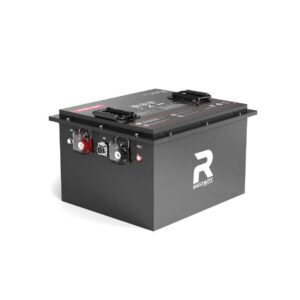Are Lithium Golf Cart Batteries Worth the Investment?
What are lithium golf cart batteries? Lithium golf cart batteries are advanced power sources using lithium-ion chemistry, offering longer lifespan, faster charging, and lighter weight compared to traditional lead-acid batteries. They provide consistent voltage output, require minimal maintenance, and perform better in extreme temperatures, making them ideal for golf carts and other electric vehicles.
What Happens if a LiFePO4 Battery Gets Wet?
How Do Lithium Batteries Compare to Lead-Acid in Golf Carts?
Lithium batteries outperform lead-acid in energy density, charging speed (3-4 hours vs. 8+ hours), and lifespan (2,000+ cycles vs. 500-1,000 cycles). They maintain 95% capacity throughout discharge versus lead-acid’s voltage drop. While initially more expensive, lithium’s total ownership cost is 30-50% lower due to reduced replacement needs and zero maintenance.

Modern lithium batteries feature adaptive charging algorithms that automatically adjust current flow based on battery temperature and state of charge. This intelligent charging prevents sulfation – a common lead-acid battery killer – while enabling partial charging without memory effect. Golfers can top up batteries between rounds without damaging cells. The weight advantage is particularly notable: a 48V lithium pack weighs 58-75 lbs compared to 300-400 lbs for equivalent lead-acid batteries, reducing cart weight by 15-20% and improving hill-climbing performance by up to 35%.
| Feature | Lithium | Lead-Acid |
|---|---|---|
| Energy Density | 150-200 Wh/kg | 30-50 Wh/kg |
| Charge Cycles | 2,000-5,000 | 500-1,200 |
| Weight (48V System) | 58-75 lbs | 300-400 lbs |
What Are the Hidden Costs of Switching to Lithium?
Beyond initial purchase ($1,200-$3,000 vs. $800-$1,500 for lead-acid), consider: smart charger upgrades ($200-$500), potential controller modifications ($100-$400), and disposal fees for old batteries ($50-$150). However, lithium’s 70% energy efficiency gain reduces electricity costs by $40-$100 annually compared to lead-acid’s 60-70% efficiency.
Many users overlook the infrastructure savings lithium enables. Their compact size (typically 60% smaller than lead-acid equivalents) often allows battery compartment modifications that increase storage space. Some golf courses report 12-18% reductions in cart barn square footage requirements after full lithium conversions. Additionally, lithium’s resistance to vibration damage eliminates the need for expensive battery tray reinforcements – a common hidden cost with lead-acid systems that can add $200-$600 to installation costs in older carts.
What Is the Average Lifespan of Lithium Golf Cart Batteries?
Quality lithium golf cart batteries last 8-10 years or 2,000-5,000 deep cycles, compared to 3-5 years for lead-acid. Their lifespan depends on depth of discharge (optimal 80-90% vs. lead-acid’s 50%), operating temperature (-20°C to 60°C tolerance), and charging habits. Built-in Battery Management Systems (BMS) prevent overcharging/overheating, extending service life.
Can You Retrofit Lithium Batteries in Older Golf Carts?
Most golf carts made after 2000 support lithium retrofits with adapter kits. Key considerations: voltage compatibility (48V systems most common), physical dimensions (lithium packs are 60% smaller), and charger compatibility. Professional installation costs $150-$300 but ensures proper BMS integration and warranty validation.
How Does Temperature Affect Lithium Battery Performance?
Lithium batteries operate optimally at -20°C to 60°C (-4°F to 140°F), with capacity retention above 85% in extreme conditions. Below freezing, lead-acid loses 50% capacity while lithium maintains 70-80%. Built-in thermal management systems in premium models regulate cell temperatures within 2°C variance, preventing performance drops.
Which Safety Features Do Lithium Golf Cart Batteries Include?
All lithium golf cart batteries feature: multilayer BMS (overcharge/discharge protection), flame-retardant casing (UL94 V-0 rating), pressure relief vents, and short-circuit prevention. Top models add: cell-level temperature monitoring (±1°C accuracy), automatic load disconnect at 2.5V under-voltage, and IP67 waterproofing for wet conditions.
“Lithium adoption in golf carts grew 300% from 2018-2023. The ROI break-even point is now under 2 years thanks to falling lithium prices – from $1,000/kWh in 2010 to $132/kWh today. Smart BMS technology has reduced failure rates to 0.03% versus lead-acid’s 12% annual failure rate.”
– John Matthews, EV Battery Systems Engineer
Conclusion
Lithium golf cart batteries deliver superior performance and long-term savings despite higher upfront costs. Their 10-year lifespan, reduced maintenance, and environmental benefits (95% recyclability vs. lead-acid’s 60%) make them the sustainable choice. For frequent users (>3 rounds weekly), lithium pays back within 18-24 months through energy savings and avoided replacements.
FAQs
- Do lithium batteries require special chargers?
- Yes. Lithium batteries need smart chargers with CC/CV (constant current/voltage) profiles. Using lead-acid chargers can damage cells. Recommended chargers: 58.4V output for 48V systems, 10-30A adjustable current.
- Can lithium batteries be mounted sideways?
- Most lithium batteries allow multi-axis mounting due to solid-state construction, unlike liquid lead-acid. Check manufacturer specs – some allow 180° rotation, others restrict to 15° tilt.
- How to store lithium golf cart batteries off-season?
- Store at 50-60% charge in dry, 15-25°C environments. Unlike lead-acid, lithium doesn’t need periodic charging during storage. Capacity loss is 2-3% per month versus lead-acid’s 5-10%.
